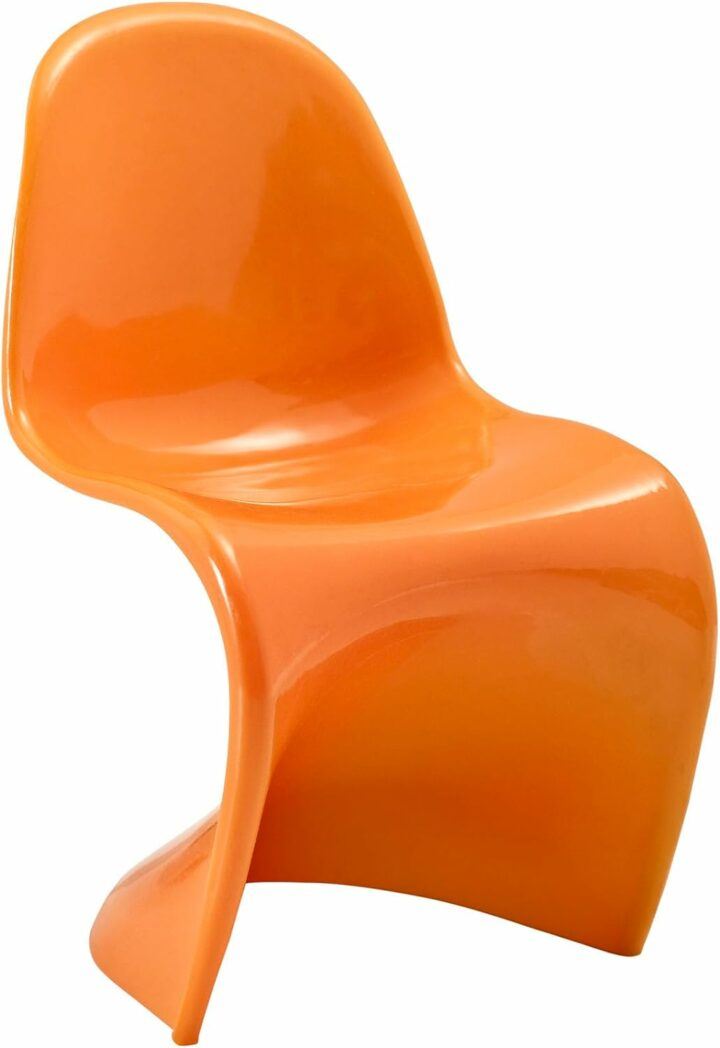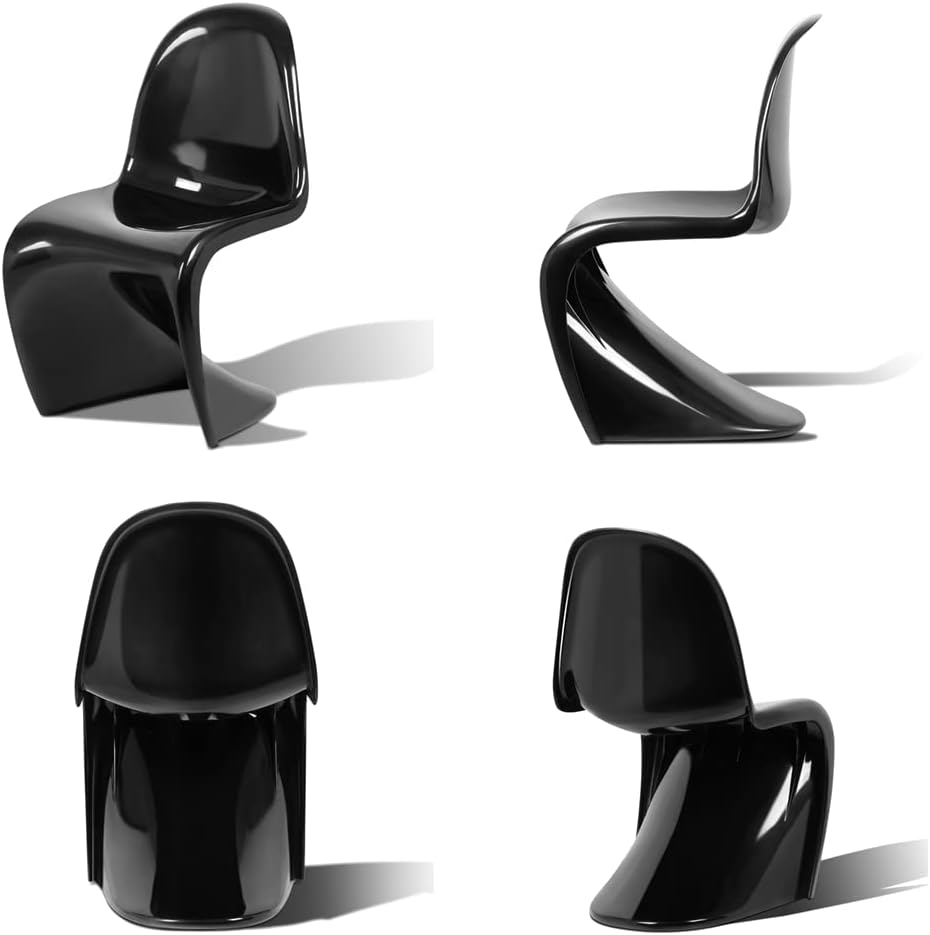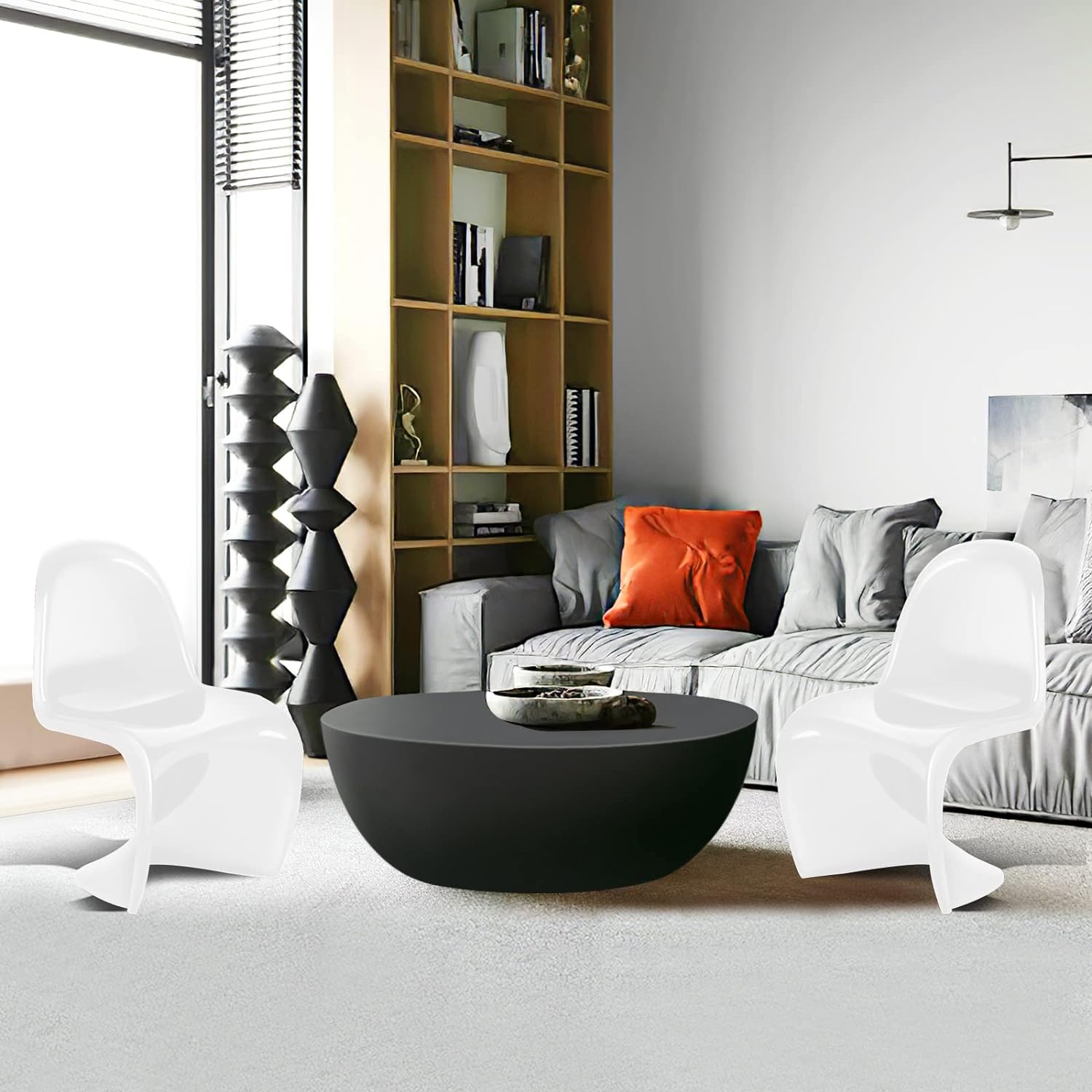Table of Contents
Panton Style Chair: Iconic Design and Modern Applications
The Panton style chair is an iconic piece of Danish design that continues to captivate furniture enthusiasts around the world. Created by Verner Panton, this chair is celebrated for its innovative form and material. Its sleek, S-shaped design combines aesthetics with functionality, making it a timeless addition to modern interiors.
Initially produced using rigid foam, the Panton chair later evolved to use thermoplastic materials, enhancing its flexibility and durability. This evolution not only improved its functionality but also cemented its place as a pioneering piece in twentieth-century design.
The Panton chair has also made its mark in popular culture and prestigious design circles. Its bold design has earned it recognition and numerous awards, reflecting its lasting impact. Today, it stands as a symbol of modern design and practical artistry.
Key Takeaways
- The Panton chair was designed by Verner Panton.
- The chair’s material evolved from rigid foam to thermoplastic.
- It is a celebrated piece in modern culture and design circles.
- Sculptural chair made from a single piece of polypropylene that is Incredibly durable and easy to clean Stackable design for easy storage when not in use.
- Its futuristic design captivated the public when it was first unveiled in 1967.
- Due to its simple design and use of basic materials, this modernist design icon is easily obtainable for a wide range of people.
The Designer: Verner Panton
Verner Panton, a Danish designer, revolutionized chair and furniture design with his innovative use of materials and futuristic styles. His work is renowned for its bold colors and unconventional forms.
Early Career and Impact on Furniture Design
Verner Panton’s early career set the stage for his influential work in furniture design. After studying architecture at the Royal Danish Academy of Fine Arts, Panton started working under the famous designer Arne Jacobsen. This experience helped him develop a unique approach to design.
Panton’s major breakthrough came with the creation of the iconic Panton Chair. Designed in 1960 and released in 1967, it was the first single-form injection-molded plastic chair. This chair became a symbol of 1960s pop culture and remains a classic in modern design.
Through his career, Panton’s work challenged traditional furniture styles. He embraced new materials like plastics and created pieces that were not only functional but also visually striking. His designs influenced subsequent generations of designers and continue to be celebrated for their innovation.
Panton’s Philosophy and Design Aesthetics
Verner Panton’s design philosophy was rooted in creating functional yet visually dynamic pieces. He believed that furniture should not just be utilitarian but also enhance the environment it occupies.
Panton was known for his use of bright, bold colors and organic shapes. He often experimented with new materials such as plastic and fiberglass, which allowed him to create seamless, flowing forms. His work frequently featured geometric patterns and futuristic designs.
In his interiors, Panton sought to create immersive experiences. His designs aimed to stimulate the senses and evoke emotional responses. By merging functionality with artistic expression, Panton left a lasting impact on the world of design. His pieces, like those for the Spiegel Building, reflect this commitment to innovative and engaging design.
Link to more about Verner Panton’s work.
Design Evolution of the Panton Chair
The Panton Chair, designed by Verner Panton, is a 20th-century iconic piece known for its futuristic design and use of innovative materials. It took several stages of development and collaboration to refine this chair into the classic it is today.
Initial Concepts and Prototypes
Verner Panton, a Danish designer, first envisioned the Panton Chair in the 1960s. He wanted to create a single-piece chair using modern materials like polyurethane. Early prototypes were made of polyester reinforced with fiberglass.
These initial models were experimental and primarily handmade, showcasing the chair’s organic, flowing shape. Although revolutionary, these prototypes had limitations in terms of durability and mass production. The designs, however, set the foundation for future development.
Panton’s persistence in refining the design and material suitability played a crucial role. He aimed to offer comfort, functionality, and aesthetic appeal in one seamless piece. These early efforts marked a critical step toward achieving his vision.
Collaboration with Vitra
The real evolution of the Panton Chair began when Panton collaborated with Vitra, a Swiss furniture company. Rolf Fehlbaum, Vitra’s co-founder, believed in the potential of Panton’s design. Together, they worked on enhancing the chair’s stability and production efficiency.
Vitra introduced advanced materials like polypropylene, allowing the chair to be more flexible and durable. This collaboration facilitated the transition from small-scale production to large-scale manufacturing. They developed the necessary molds and production techniques to streamline the process.
By the late 1960s, the chair was being produced using injection-molded polypropylene, making it more affordable and accessible. This partnership between Panton and Vitra, with Rolf Fehlbaum’s support, was instrumental in transforming the Panton Chair from an innovative concept to a widely recognized design classic.
Material and Production
The Panton style chair relies on innovative materials and processes to achieve its unique, flexible design. Let’s explore the specific material and how it is manufactured.
Polypropylene: The Key to Flexibility
Polypropylene is the primary material used in the production of Panton style chairs. This type of plastic is selected for its durability and flexibility. It can bend without breaking, which is crucial for the chair’s smooth, continuous shape.
Polypropylene is also lightweight, making the chair easy to move and handle. Additionally, it is resistant to many chemicals and environmental factors, which ensures the chair’s longevity. Another advantage is that polypropylene can be easily colored, providing a wide range of options for manufacturers.
Manufacturing Process
The production of the Panton style chair begins with the creation of a mold that defines its iconic shape. Molten polypropylene is then injected into this mold. This process is called injection molding and it allows for precise and consistent replication.
After the plastic cools and hardens, the chair is removed from the mold. Finishing touches, such as smoothing out any rough edges and adding ridges for stability, are applied. Finally, the chair undergoes quality checks to ensure it meets the required standards before it reaches customers.
Aesthetics and Form
A Panton-style chair is famous for its unique design, which combines functionality with a distinctive appearance. Its form and finish play crucial roles in its appeal, showcasing both artistic and practical elements.
Anthropomorphic Shape and Cantilever Design
The Panton chair features an anthropomorphic shape, resembling the human body. This design approach enhances comfort, as the curves fit the natural contours of a seated person. The chair’s shape aids in distributing weight evenly, adding to its ergonomic advantages.
The cantilever design, where the seat is supported by a single leg, contributes to its modern look. This approach eliminates the need for traditional chair legs, creating a sleek and contemporary profile. The balance achieved by this design not only supports the weight but also provides a slight flex, enhancing comfort without additional cushioning.
Colour and Finish in Panton Chair Variants
Panton chairs come in various colors and finishes, allowing you to match them with different interior styles. Bright hues can make a bold statement, while neutral tones blend seamlessly into any setting. The colour choice can significantly influence the chair’s visual impact in a space.
The finish is equally important. A matt finish gives the chair a sophisticated and understated look, often preferred in minimalist designs. In contrast, glossy finishes can make the chair stand out as a centerpiece. Both options offer durability and ease of maintenance, ensuring the chair remains attractive over time.
Functional Aspects
The Panton style chair is known for its unique design and usability features. Key considerations include comfort, ergonomics, durability, and stack ability.
Comfort and Ergonomics
The Panton chair offers significant comfort due to its ergonomic design. Created to follow the natural contours of the human body, it helps prevent discomfort during long periods of sitting. The chair’s smooth curves support your back effectively, promoting a good posture.
The flexible material used, often a type of molded plastic, adapts to your body shape. This lightweight material also makes the chair easy to move, adding to its everyday practicality. Its cantilevered structure provides a slight bounce, adding an extra layer of seating comfort.
Durability and Stack ability
The durability of the Panton chair is a key feature. Made from strong, weather-resistant materials, it can withstand daily wear and tear. The plastic material is not only durable but also easy to clean, making it a great choice for both indoor and outdoor use.
Another practical aspect is its stack ability. Designed to be stacked up to four chairs high, it saves space when not in use. This makes it ideal for places with limited storage, such as small apartments or commercial settings where space efficiency is crucial.
You can learn more about the Panton style chair’s functional aspects and how it combines aesthetic appeal with practical design.
The Panton Chair in Modern Culture
The Panton Chair holds a significant place in modern culture, appearing in esteemed museums and profoundly influencing contemporary interior design since its creation in the 1960s.
Presence in Museums and Collections
The Panton Chair is a notable piece in many prestigious museums worldwide. For example, it is featured prominently in the Design Museum for its innovative shape and material. The chair’s sleek, modern design makes it a natural fit for exhibitions focusing on 20th-century furniture innovations.
You can also find the Panton Chair in the permanent collections of museums like the Museum of Modern Art (MoMA) in New York and the Victoria and Albert Museum in London. These institutions display the chair as a landmark of 1960s design, representing the era’s bold experimentation with form and function.
The Chair’s Role in Contemporary Interior Design
In today’s interiors, the Panton Chair is a symbol of style and history. Interior designers often include it in modern spaces to add a touch of classic 1960s flair. Its curvy, seamless form contrasts beautifully with both minimalist and eclectic décor styles.
The chair is particularly valued for its versatility. It works equally well in dining rooms, living rooms, and even outdoor settings. The range of colors available means it can be customized to fit any color scheme. The durability and easy maintenance of its plastic material make it a practical choice for contemporary homes.
Design enthusiasts and collectors regard the Panton Chair as more than just a piece of furniture. It’s a statement piece that celebrates creative design and innovation.
Product Line Variations
The Panton style chair offers different models to cater to varying needs and preferences, from its classic adult design to those suitable for children.
The Panton Chair Classic and its Legacy
The Classic Panton Chair is a notable design in furniture history. Created by Verner Panton in 1967, it was the first chair to be made entirely out of molded plastic. This innovation gave it a sleek, modern look that remains popular today.
The chair is made from durable polyurethane foam, making it not only stylish but also comfortable. It has been produced by companies like Herman Miller, contributing to its widespread availability and recognition.
New variations have emerged over the years, keeping the essence of the original design. These variations include changes in colors and finishes without moving away from the classic shape.
Panton Junior: Adapting Design for Children
The Panton Junior is a child-sized version of the original Panton Chair. Designed to offer the same aesthetic appeal and functionality, it is smaller and more accessible for young users.
Like the classic version, the Panton Junior is made from sturdy, easy-to-clean plastic. It comes in bright colors that appeal to children, making it a popular choice for modern nurseries and play areas.
This model allows children to enjoy a piece of furniture that reflects high design values. By adapting the design for younger users, it maintains the legacy of the Panton Chair in a fun and practical way.
Recognition and Awards
The Panton style chair has received significant acclaim and many accolades over the years.
One major award is the International Design Awards. This prestigious recognition honors outstanding designers every year. The Panton chair stood out for its innovative use of material and distinctive shape.
Verner Panton’s S chair, created ten years before Panton’s other designs, also gained significant recognition. This chair is often cited for its bold design, reflecting the influential modernist movement.
In recent years, the chair has continued to earn accolades for its timeless appeal and influence on contemporary furniture design.
Key Awards:
- Biennale in Ljubljana: The Panton chair received a medal here, highlighting its importance in the world of contemporary design.
- AIA Awards: Various distinctions have been given, recognizing the chair’s impact on architecture and design.
- Europan Awards: Further awards have solidified the chair’s status as a design icon.
Individuals often celebrate their creation through various showcases and exhibits. The chair’s unique form, having removed unnecessary material, remains functional, stylish, and a symbol of modern design excellence.
These awards and recognitions are a testament to the chair’s continuing influence in the design world, making it a celebrated piece in the history of furniture design.
The Impact of the Panton Chair on Design
The Panton Chair is a significant milestone in furniture design. Its unique shape and materials have influenced various aspects of chair design, pushing the boundaries of traditional furniture craftsmanship.
Influence on Future Chair Designs
Verner Panton’s iconic chair is known for its cantilever structure. This design, a single piece of molded plastic, has inspired many contemporary chair designs due to its innovative use of material and structure.
- Danish design* has greatly embraced the Panton Chair’s principles, blending functionality with aesthetic appeal.
Many designers have experimented with laminated plywood and other materials to achieve similar fluid forms. The Eames Lounge Chair is an example of another innovative design that followed, incorporating the lessons from the Panton Chair’s success.
The impact of the Panton Chair can be seen in the way modern chairs emphasize simplicity and elegance. Its design challenged traditional forms and encouraged designers to explore new possibilities in seating concepts.



